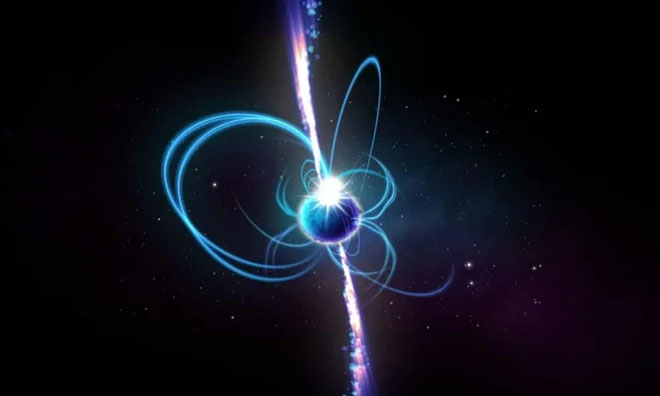Mysterious space object emits radio signal every 20 minutes
Astronomers have just announced the discovery of a mysterious object that emits a beam of radio waves every 20 minutes.
The team believes that this object could be a new class of slow-rotating neutron stars with a strong magnetic field.
The repeating signals were detected during the first three months of 2018, but then disappeared, suggesting they are related to a transient event, such as a 'starquake' - an earthquake on a single planet. star, Guardian reported on January 26.
The object, thought to be about 4,000 light-years from the plane of the Milky Way, matches an astronomical object thought to have the strongest magnetic field of any known neutron star class of any known object in the universe. pillar.
Leading the team, Natasha Hurley-Walker, from Curtin University of the International Center for Radio Astronomy Research, said: 'It's a type of slow-rotating neutron star that has been conjectured to exist theoretically. theory. We didn't expect them to be so bright."

Astronomers have announced the discovery of a mysterious object that emits a beam of radio waves every 20 minutes.
Neutron stars are the remnants of a supernova explosion. At the size of a small city, early neutron stars rotated extremely fast, detectable as pulsating stars, glowing and then dying out continuously within milliseconds or seconds.
Over time, neutron stars will lose energy and slow down and gradually disappear.
Astronomers are baffled because the newly found object was still emitting enough energy to be detectable when they observed it between January and March 2018. 'Somehow, this star converts magnetic energy to radio waves much more efficiently than anything we've seen before,' said Hurley-Walker.
However, the fact that the signals then disappeared also raised many questions for scientists. One possibility is that the signals are the result of some event, such as an earthquake, in which the extremely thick shell of a neutron star undergoes a sudden change, releasing a massive stream of energy into space. , it is likely that radio pulses repeat after this event.
- The mysterious radio signal was identified as originating from the universe
- Obtain a mysterious signal of aliens
- Detecting mysterious radar waves, can emanate from outer space civilization
- Cosmic signals repeat on a 157-day cycle
- Mysterious radio waves can be a sign of aliens
- Find the missing material answer of the universe
- The Arecibo message is the first 'letter' sent to the aliens
- Mysterious radio signals from the universe
- Scientists discovered a merger between a black hole and a mysterious object
- Signal detection of 5 billion years old, preceding the solar system
- Discover radio history and radio technology
- Telescope Australia detects more mysterious radio signals
 Van Allen's belt and evidence that the Apollo 11 mission to the Moon was myth
Van Allen's belt and evidence that the Apollo 11 mission to the Moon was myth The levels of civilization in the universe (Kardashev scale)
The levels of civilization in the universe (Kardashev scale) Today Mars, the sun and the Earth are aligned
Today Mars, the sun and the Earth are aligned The Amazon owner announced a secret plan to build a space base for thousands of people
The Amazon owner announced a secret plan to build a space base for thousands of people